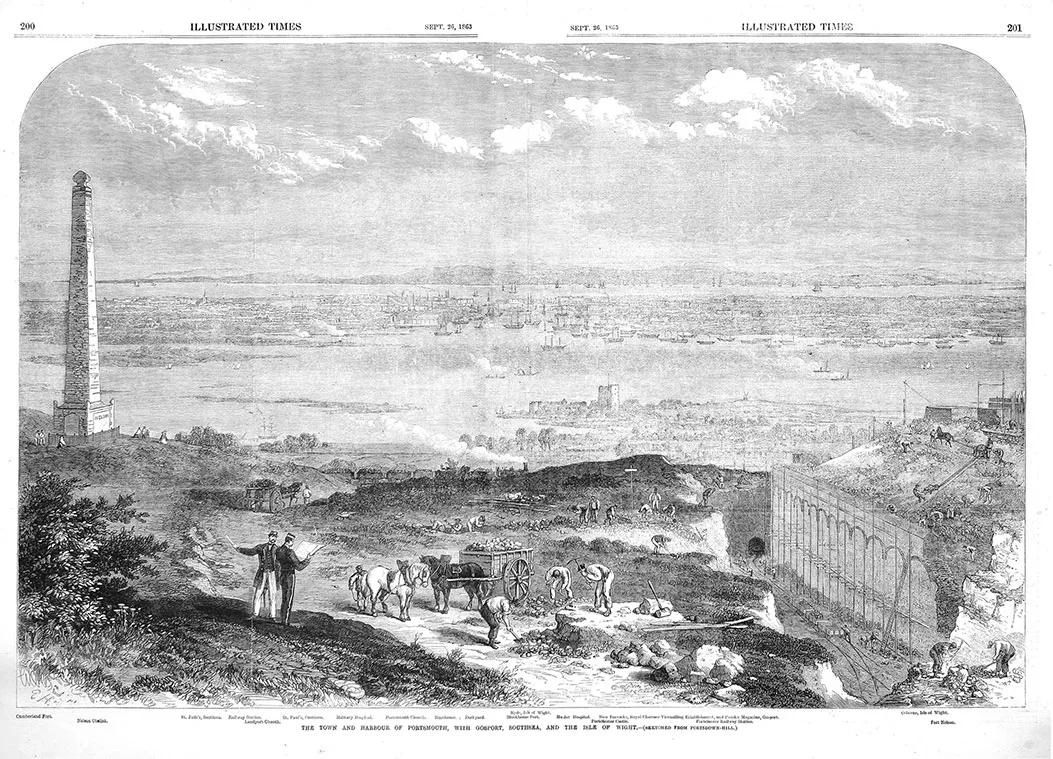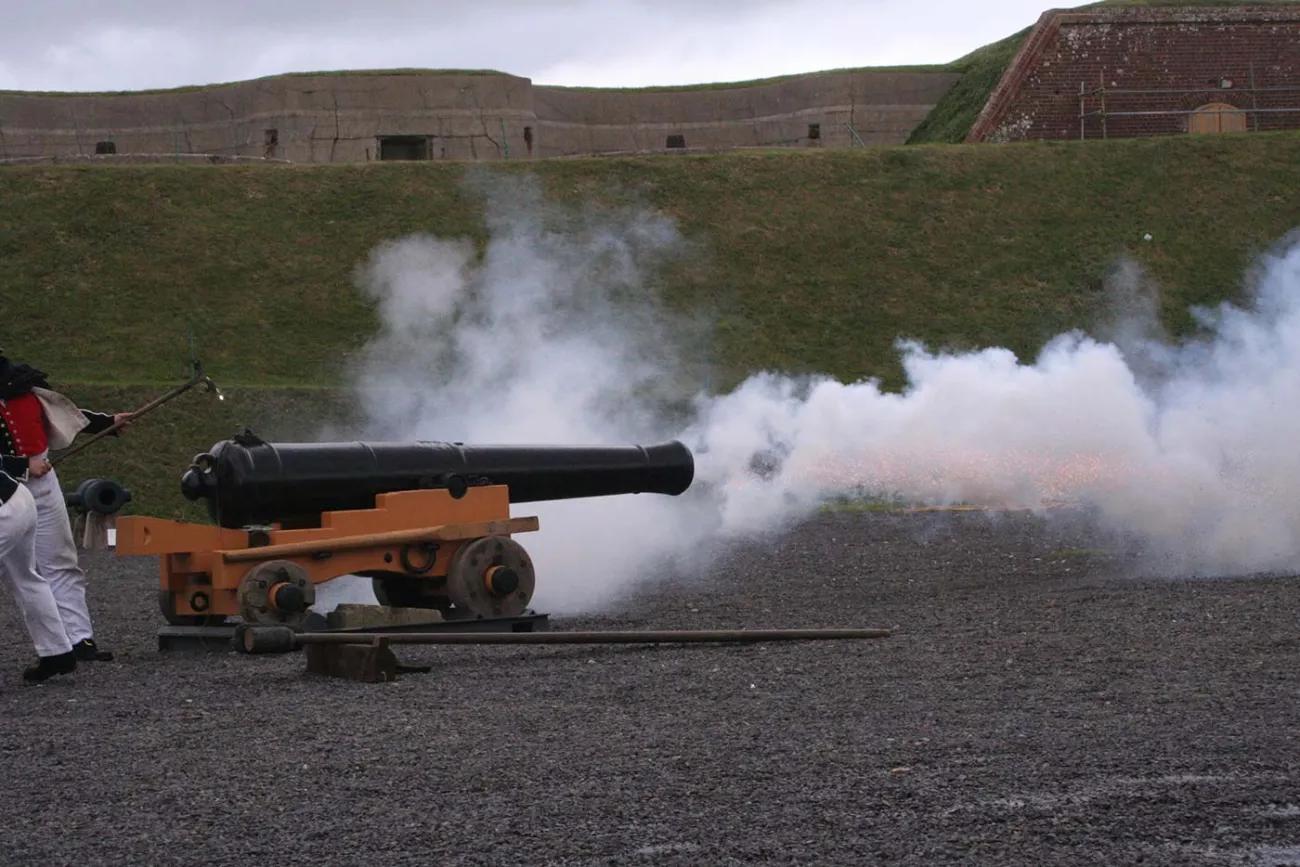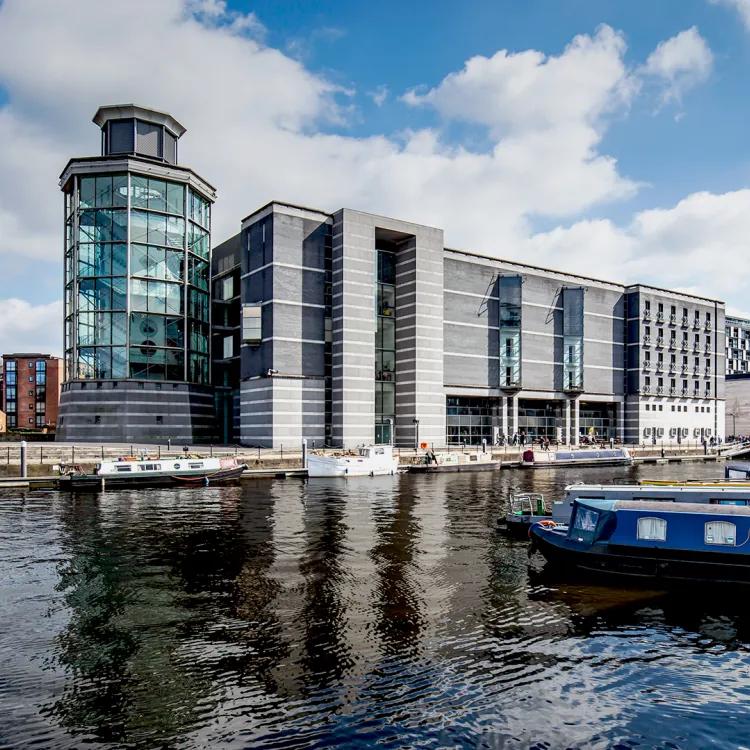The Royal Commission of 1860
In the summer of 1860 fortification specialists of the Royal engineers beat their way through standing wheat on peaceful Portsdown, making the best compensation deals they could with the tenants of the Southwick estate.
Their sense of urgency came from the highest level of government. They were marking out on the ground the latest type of European fortification. A vast scheme of mutually supporting forts would girdle Portsmouth by land and sea. Soon the chalk hill would be gouged deeply to form dry moats and ramparts; in the case of Fort Widley excavations were sunk where the townsfolk had previously come to admire the view and take tea.
Fort Nelson was named for the neighbouring column and bust of Horatio, Lord Nelson, a monument which marked England’s greatest naval victory at Trafalgar in 1805, and the death of its greatest admiral.
In Britain, the end of the Crimean War marked the beginning of a century of military anxieties. France under Napoleon III was building up her military and naval strength. ‘Gloire’, the first of a new kind of armoured steam-powered warship, raised doubts as to Britain’s ability to repel an invasion.
These doubts caused Lord Palmerston to set up a Royal Commission to report on the defences of the United Kingdom, with Portsmouth and its Royal Dockyard as the priority. Supported by Queen Victoria and her husband Prince Albert, the result was the building of the greatest works of fortification yet undertaken in this country in peacetime.
A start on modernizing the Royal Navy was made with the launch of HMS Warrior, the British answer to Gloire, and Britain’s traditional wooden walls began to be replaced with ironclads. The third element in strengthening Britain’s defences was to augment the small standing army by the raising of a new volunteer corps. Artillery volunteers were especially important and without them the extensive Portsmouth fortress could never have been garrisoned. Fort Nelson, along with the other land works in this huge ring fortress around Portsmouth, was substantially complete by the late 1860s.
The huge armament demands for the Royal Commission forts were never fully met. The threat of invasion evaporated, and Fort Nelson and its neighbours were never put to the test: such was the pace of change both in technology and international relations. By the time they were nearly finished, France had been invaded and defeated by Prussia.
Because the forts were not used to repel an invasion, and perhaps because it seemed as though the forts pointed the wrong way (their guns aim inland), they soon became known locally as ‘Palmerston’s Follies’.
It could hardly be admitted officially that these forts were obsolete almost as soon as they were completed. They were therefore maintained, and formed monumental props in the large-scale manoeuvres of both regulars and volunteers during the later 19th century; spectacles which the townsfolk flocked to watch, bringing picnics once the tea rooms were demolished.
Fort Nelson is part of a massive ring of brick, masonry and earth forts, built to provide the fire power to deter an enemy attack on Portsmouth from inland.
Portsmouth was Britain’s premier naval dockyard, building and maintaining warships that were vital to the defence of Britain and her growing empire.
Portsmouth faced the new French dockyard at Cherbourg, only a short 130 km (81 mile) journey for new steam-powered warships.
The threat was not simply a direct naval assault. It was feared that a French invasion force might land elsewhere, occupy Portsdown Hill, and fire their new long-range guns to attack Portsmouth below from its landward side.
However, despite strong words, the French did not steam across the Channel. By the time the Palmerston forts were completed, France had been humiliated by war with Prussia in 1870.
Never used against invaders, the angular forts dominating the chalk ridge of Portsdown were soon called ‘Palmerston’s Follies’.
Fort Nelson and the other Portsdown forts had cost a fortune to build. They were one of the biggest defences ever built in Britain.





